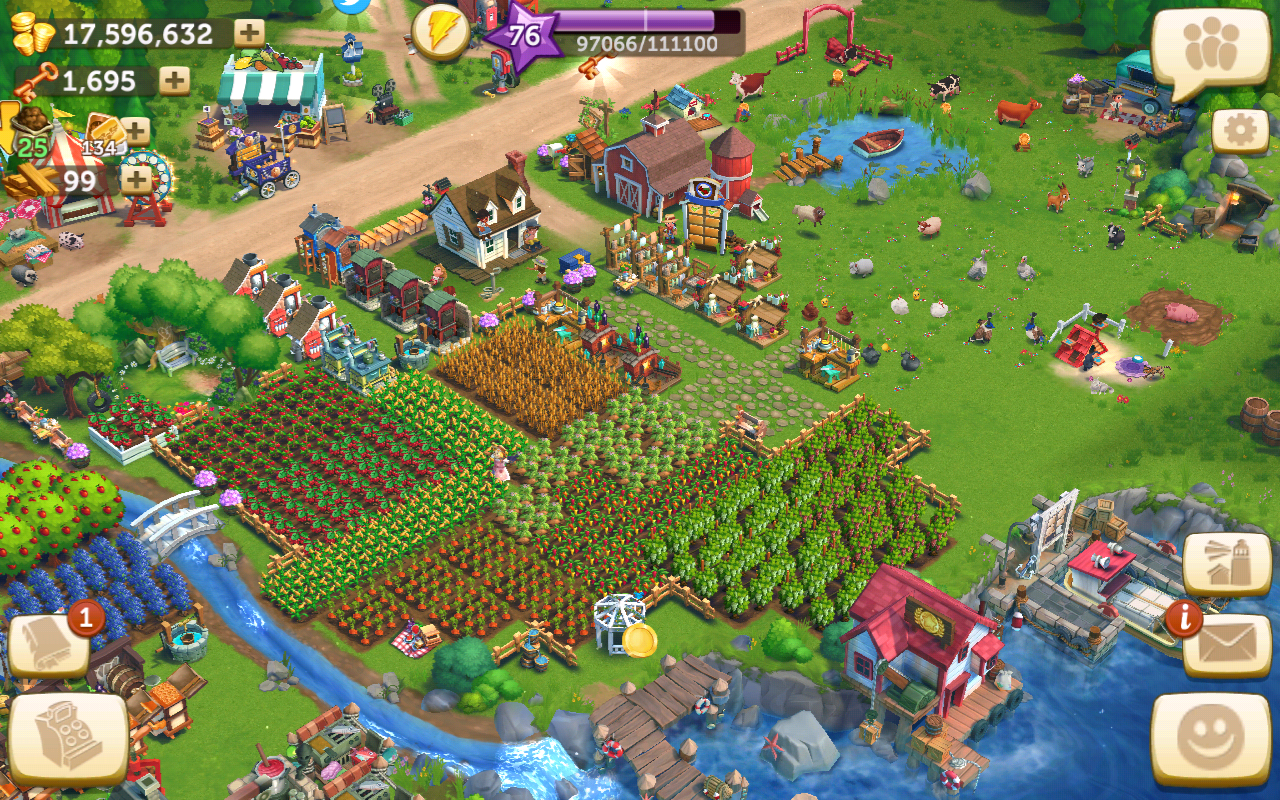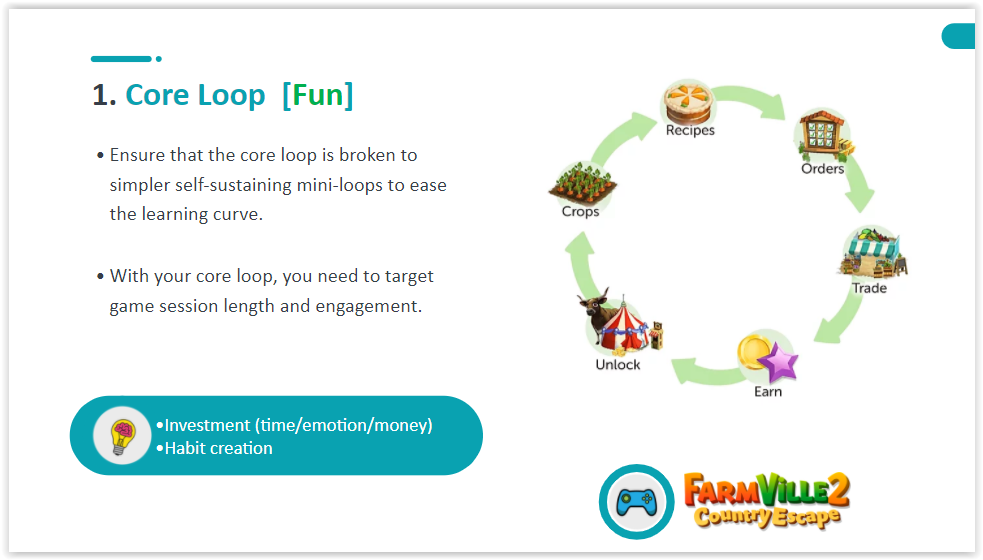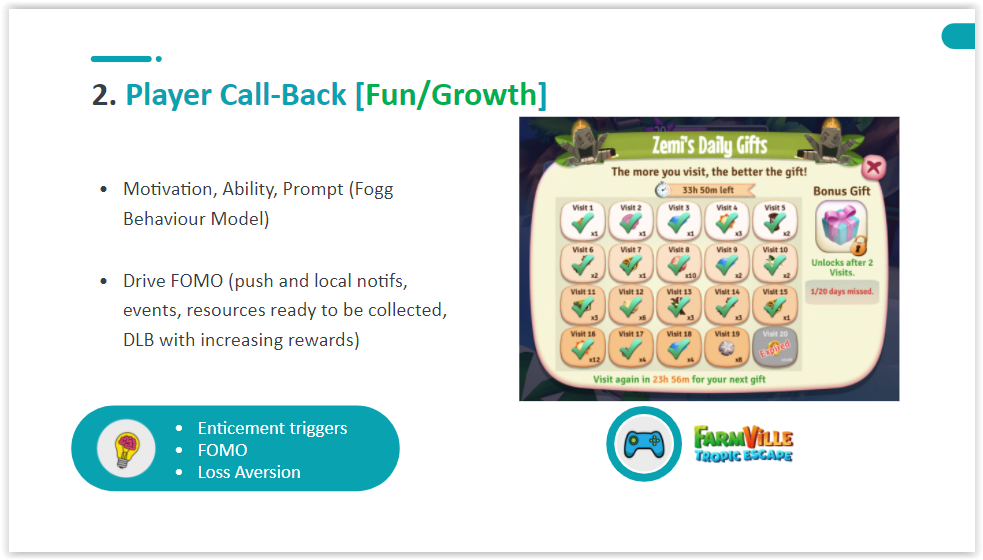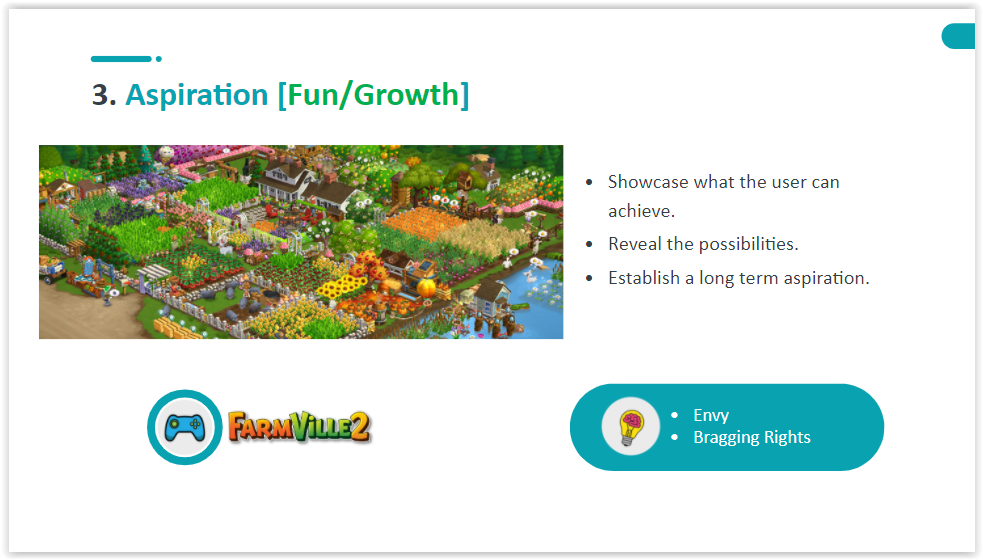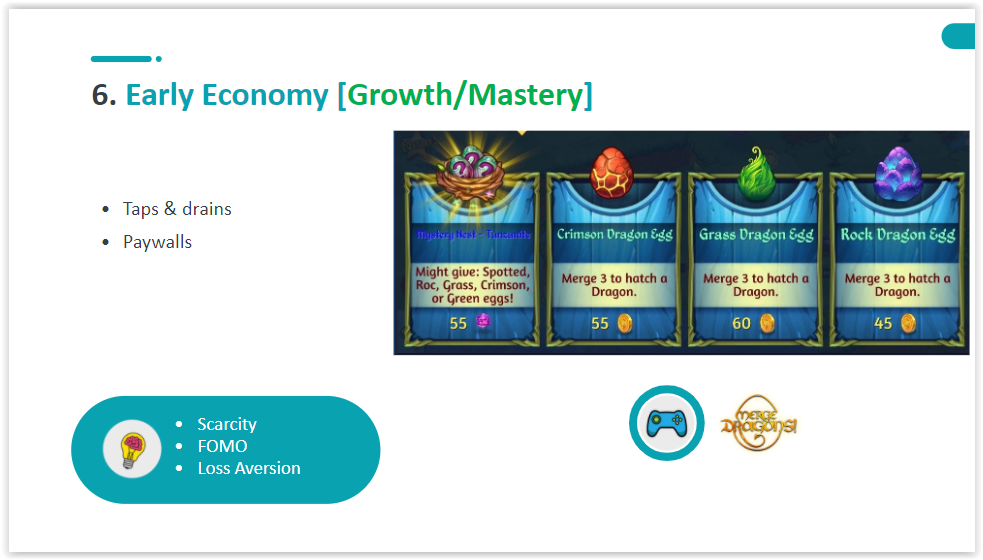7 elements on which the game design of Zynga free-play games rests
How Zynga looks at game design, — the leading designers of FarmVille 2: Country Escape, Poornima Seetharaman and Vimal Sathish, told at the online Talents in Games Conference.
FarmVille 2: Country Escape
Zynga specialists started the discussion of game design at their report with Retention of users. It is through him that they reveal the basics that you need to know to create a successful free-play game.
Recall that retention is a metric that reflects the number of users who continue to play after a certain amount of time. It is usually calculated as follows: the number of players on day N is divided by the number of players who played on day zero (on the first visit) and multiplied by 100% (more details here).
In Zynga, there are four aspects that people are ready to return to the game over and over again:
- getting pleasure from the process (Fun);
- receiving awards that give a sense of progress (Growth);
- getting skills that give you the feeling that there are new challenges ahead that will be overcome (Mastery);
- the opportunity to find like-minded people and share the fun of the game with them (Shared Experience).
Based on these aspects, Zynga has formed seven game design fundamentals applicable to a wide range of free-play projects working on retention in them.
1. The main loop (Core loop)
Core loop is a chain of actions that a player performs while spending time playing. The core not only helps the user to invest time and money in the development of himself in the project, but also forms the habit of entering the game, carrying out a certain routine in it.
Zynga game designers recommend making such a basic cycle so that additional mini-cycles can be easily added to it. For example, so that the extraction of resources in the farm as a process itself is a cycle.
How well the game cycle works in the game is usually shown by the retention of the seventh day (D7).
2. Stimulating the reaction from the player (Player Call-Back)
To explain this basis in game design, Zynga specialists resort to the work of Dr. B. J. Fogg, who founded the Behavioral Design Lab at Stanford University. According to his theory, in order for a person to perform an action, three conditions must coincide:
- a person should want it;
- he should be able to do it;
- there should be a push to action (trigger).
The loss of any element results in the absence of an action.
Example:
- you want to talk on the phone (motivation);
- the phone is at arm’s length from you (possibility);
- you get a call (trigger).
As a result, a conversation begins.
What does the game have to do with it? The player can be stimulated to perform certain actions by creating conditions where motivation, opportunity and trigger coincide.
The most difficult thing is working with motivation. But there are proven trails here.
For example, the use of the behavioral anomaly “Loss Aversion“: people are more eager to avoid loss than to get an equivalent profit. This is often resorted to — including when, when a level is lost, they offer to buy a couple more moves in order to successfully complete it.
Another popular example is the “Lost Profit Syndrome” (FOMO). It’s the fear of missing out on a good opportunity. It is exploited by such mechanics as a bonus for daily entry, personalized alerts and others.
3. Aspiration
This basis is also primarily designed to increase the motivation of the player. Its essence is to demonstrate to the user the possibilities that he will achieve if he continues to play. For example, in FarmVille 2, the player is given a look at the pumped farm so that he understands why it is worth staying in the project.
Another example is the appearance of sports cars from CSR2. These are models of real cars. They are made with great attention to detail. And it is quite possible to understand the desire of the players, many of whom are fond of cars, to collect them all.
4. Moments of Victory and rewards (Win Moments & Rewards)
Small victories and prizes should support motivation on the way to the goal, to the realization of aspirations. Without constant encouragement, the user will quickly cool down to the game.
The victories are divided into two types:
- intermediate (Milestone wins) — small wins that reward the player for progress towards a big goal;
- milestones (Landmark moments) are more rare victories that are possible in games, as a rule, no more than once every 5-10 days; they mark the completion of a major event, the opening of new functionality when a certain level is reached, and so on.
Prizes are also divided into two types:
- cosmetic, which give the player a feeling of instant progress;
- functional, affecting game performance and further user behavior in the product.
Games, as a rule, have both those and other rewards. The bias in favor of one type or another is determined by the audience, genre, approach to design and many others. All in the same CSR 2 cosmetic awards allow the player to express himself, as for the functional ones, thanks to them, it is easier to win races in the game.
5. Progression
The main task of the progression is to show the player that he has advanced in the game. This will give him a feeling of a certain completeness, justification of investments, greater involvement in the project. In addition, progression is a great tool for a designer. Based on the player’s progress, the difficulty is built.
The progression can be reflected in different ways: through the map, through the roster of characters, and through how the player’s farm looks like.
The main difficulty in setting up the progression is working with a balance between a wide choice of actions and “holding the handle”. Too wide a choice of options can be confusing. The reverse scenario is no better: a certain level of freedom is always necessary for players.
6. Economy at the first stages
It’s about in-game currency and how it is withdrawn from the game.
The initial balance between the receipt and expenditure of currency should help create a moment of strong pleasure from the game, drive (through progress). Then the tempo gradually decreases so that the player wants to return this feeling, this moment. And here you should insert a paywall.
At the same time, it is important to remember that the main task is to get the player hooked on the game cycle. Therefore, you should not rush with monetization. The player must see the value in spending money in the game. So usually the paywall is placed after D7 (somewhere around D14)
7. Social functions
The presence of a group of like-minded people experiencing a similar experience is one of the mandatory factors for retaining players. That’s why it’s so important to keep the players busy in the early days by building social connections (then it should be stimulated by events).
But strong communities are a double—edged blade. If the game helps to create strong social connections, but then does not offer mechanics, gameplay, events (in general, a good experience), there is a high risk that the group formed here will completely go to another game.
***
These are the basics of game design from Zynga.
Also on the topic:
- Four principles of hyper-casual game design from Supersonic Studios
- Typical errors of level design
- Mechanics of midcore games: Part 1
Is there any news? Share it with us, write to press@app2top.ru
